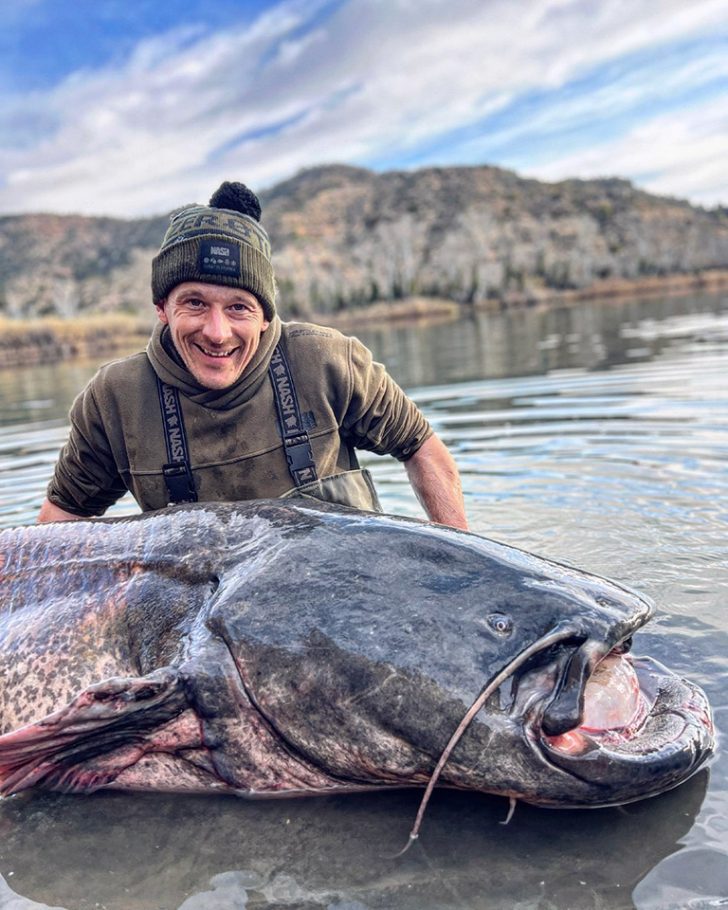By TAM Staff
In January, A British angler fishing Spain’s Ebro River for carp hooked and landed a 222-pound wels catfish. The 9-foot-long monster dragged the angler and his aluminum boat more than a mile over an hour-long fight, yet the fish is well short of the river record of 250 pounds.
“I was physically and mentally exhausted but had to give one last push to secure my prize,” wrote Ditch Ballard of his epic and miserable nighttime battle in sub-freezing temperatures. “It was the biggest battle of my fishing career, yet I wouldn’t wish it on anyone!”
Wels catfish are some of the largest freshwater fish on the planet. Every year, 200-plus-pounders are caught in European fisheries. With a lifespan of 50 years or more, they have a long time to grow. The IGFA all-tackle world record was caught from Italy’s Po River in 2010. It measured longer than 9 feet in length and weighed 297 pounds.
Fish like that are the reason hardcore catfish anglers are looking into European vacations. In U.S. waters, an angler might spend a lifetime pursuing a blue catfish heavier than 100 pounds.
Spain’s Ebro River, especially at Mequinenza Reservoir in the northeastern corner of the country, is renowned for good numbers of big fish. In northern Italy, the Po River and its delta on the Adriatic Sea, produced the world record as well as some other huge fish over the years. In France, the Rhone River and several of its tributaries have earned a reputation for big catfish. A Google search will reveal guide services and “holiday packages” offered for all of these destination fisheries and more.
From an angler’s perspective, Wels are interesting species for more than just their massive size. Like all catfish, they are bottom feeders. They like stinky bait, and are often caught on pre-made bait-pellet rigs. However, they are also voracious predators with giant mouths. Many anglers prefer to pursue them with large, loud lures. Wels have poor eyesight, so vibration and noise are important.
Their natural diet is made up mostly of earthworms, mollusks, insects and fish. As they grow larger, they begin feeding on anything they can fit in their mouths. Frogs, mice, rats and aquatic birds are all prey items. In southwestern France, an isolated population of Wels has learned to ambush pigeons on land, like orcas attacking seals on the beach.
That should be the cue for some innovative fly tyer to twist up an ultra-realistic pigeon fly.
For more information, go to www.coastalanglermag.com
